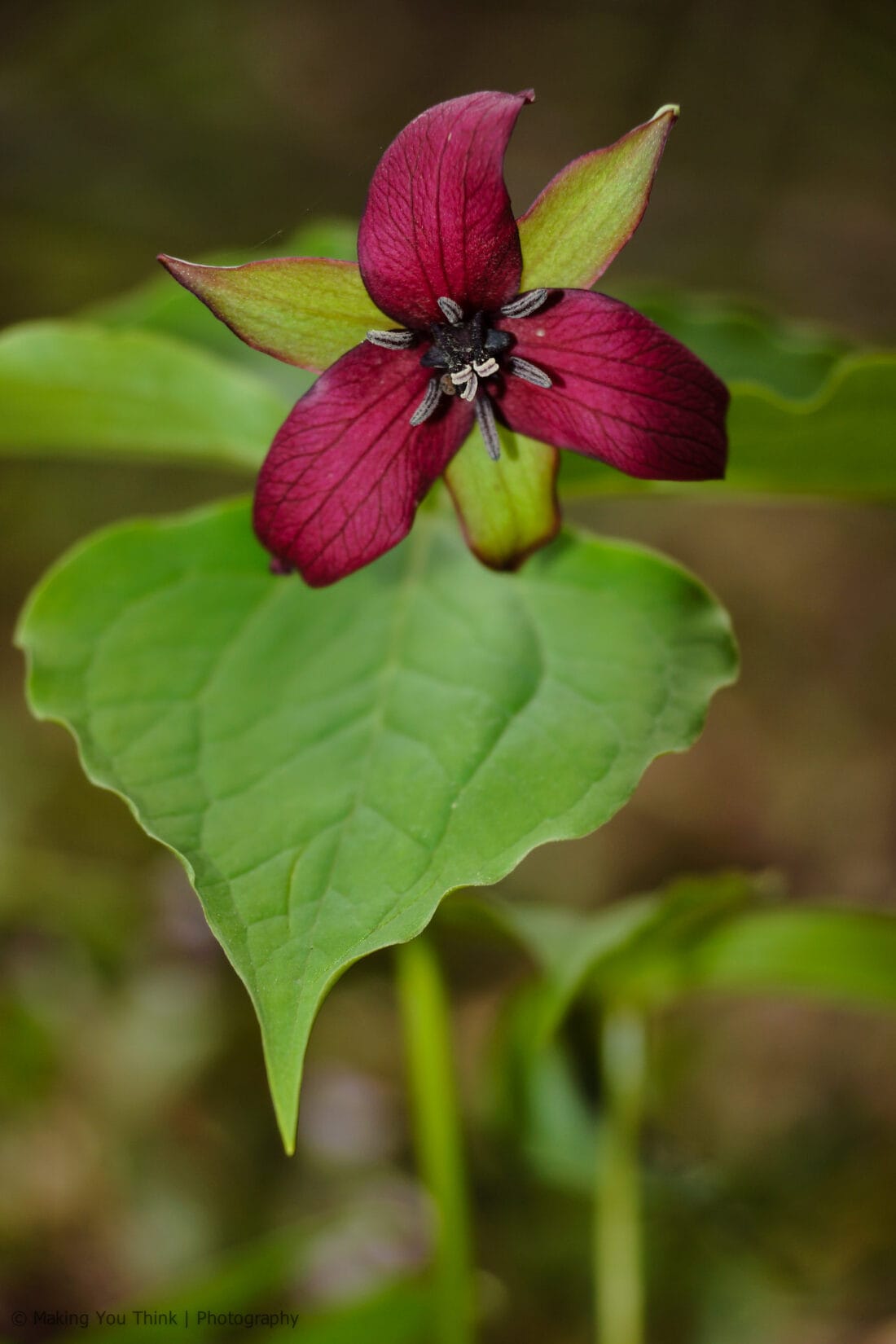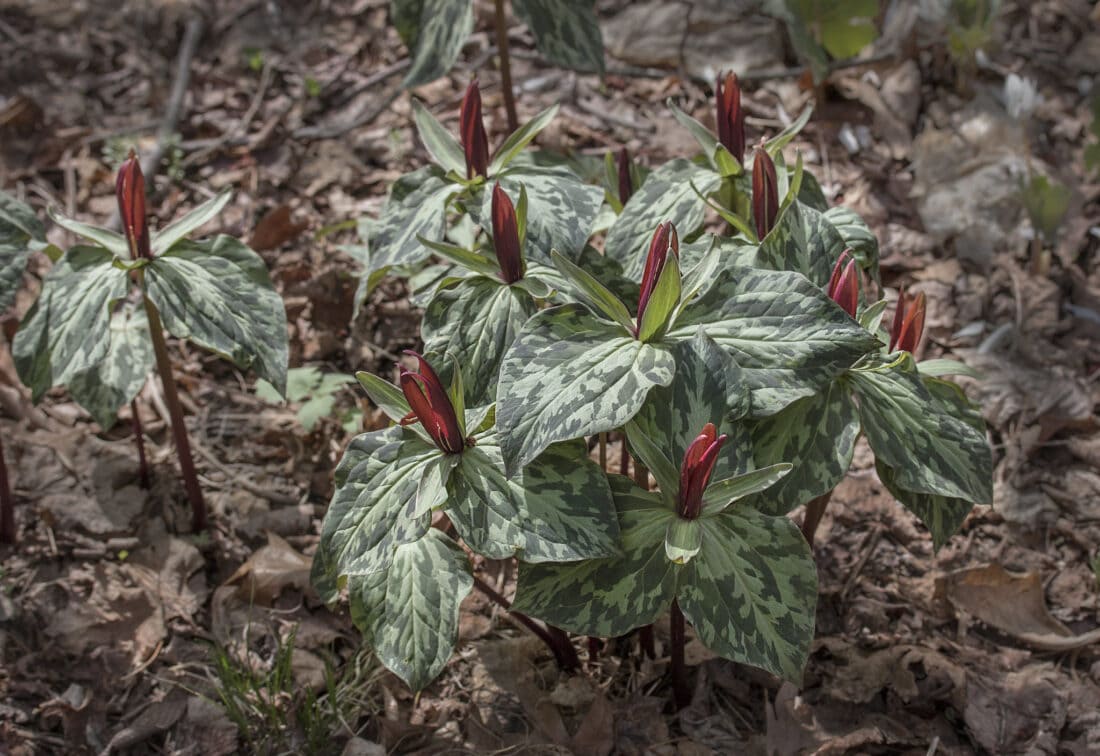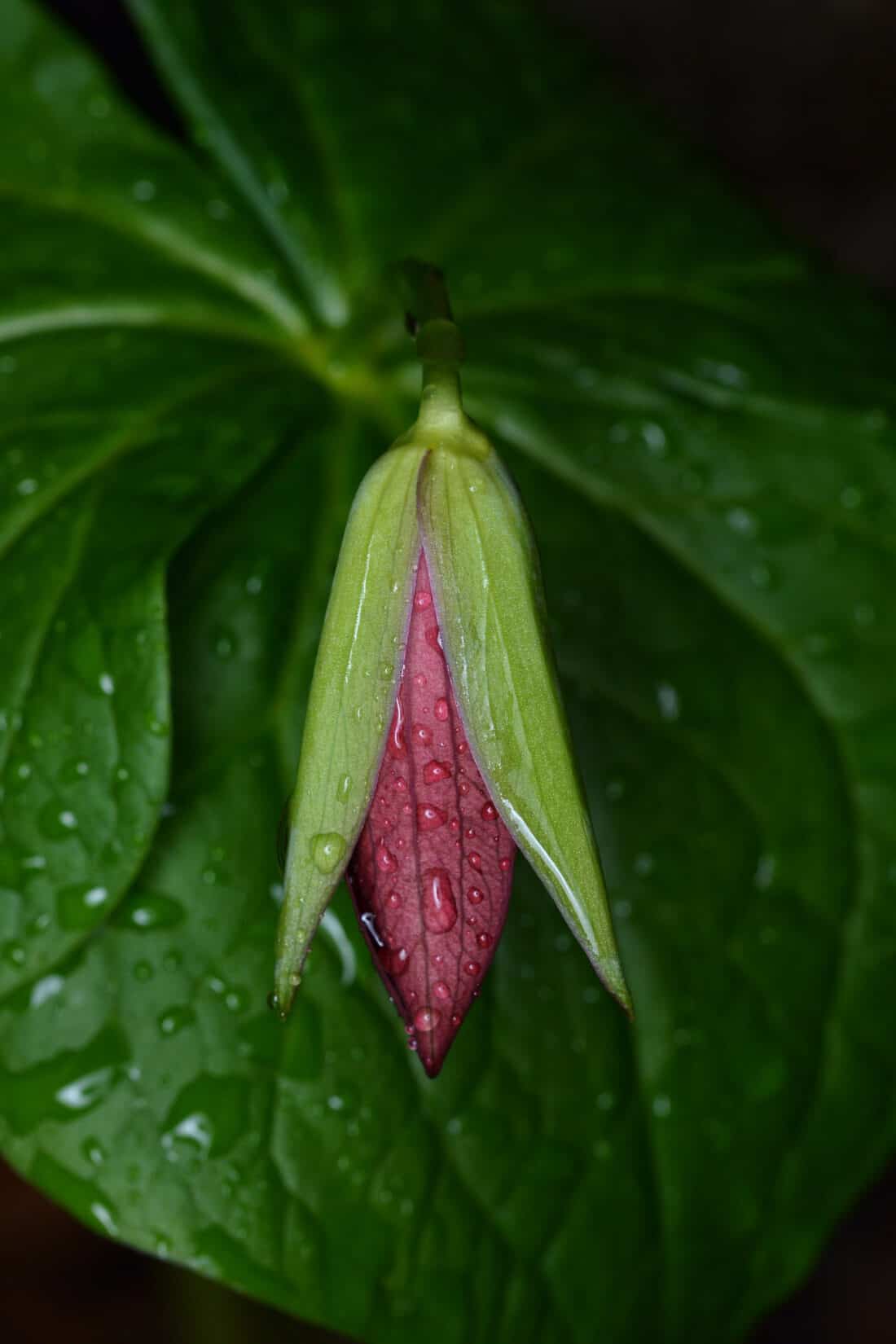I first discovered Trilliums at the famous Lime Walk of Sissinghurst Castle Garden in Kent, England. There, they were stunningly planted with various other spring flowering bulbs. It is worth a trip in April – May when they are in full bloom. At the time, I had no idea that the majority of Trilliums are native to the USA (there are also Asiatic varieties that are native to Asia). Here in New England, Trillium Erectum – also known by the common name of Wake Robin, stinking Benjamin, or more simply – purple (though I think they are more red in color) trillium.

The native Trillium erectum, is a spring-flowering, woodland, ephemeral perennial plant that is native to the east and north-eastern areas of North America. The flowers are a deep red colour, and the plant gets its name Wake-robin by analogy with the bird Robin. Both have a red breast and both herald spring.
This plant grows to about 14-16 in tall (40 cm) with a spread of about a foot and can tolerate extreme cold in winter. (Surviving temperatures down to -35 C.) The flowers stink (hence the stinking benjamon moniker) and have the smell of rotting meat. Flies pollinate them.
A warning about Trillium leaves
Trillium has beautiful leaves that sit below the flowers but should not be eaten. (They will attack your face if you put them in your mouth). The leaves contain calcium oxalate crystals (when you eat them, it feels like chewing glass) and crystal raphides (which are like needles – to accompany your glass shards – also causing mouth swelling, pain, and rashes).

Great Companion Plants for Red or Purple Trillium – Trillium erectum:
- Other Native plants that are often found in the wild with trillium are Mertensia virginica (Virginia bluebells) and Uvularlia grandiflora (Large Flowered Bellwort). The yellow flowers that hang from the arching stems of the Bellwort look really great with the red of trillium and the blue flowers of the Mertensia. Virginia Bluebells, Uvularia, and trillium all bloom at the same time and, when planted together in a garden, make a striking native spring display.
- Take inspiration from historical documentation (below). In this botanical illustration from 1869 depicting Canadian Wildflowers, you can see trillium paired with Dicentra (Bleeding hearts), Geranium maculatum (wild geranium), and Lysimachia borealis (synonym Trientalis borealis) or Trientalis Americana – the starflower.

- Sissinghurst, where I first saw trillium plants, has a long walk with a huge variety of bulbs and spring ephemerals – like trillium planted down both sides. When planning a bulb succession to take you from early spring through mid-spring to late spring, consider planting other rhizomatous herbs (like wake robin trillium) to complement and provide visual texture to the typically fleshy leaved spring bulb compilation.
Additional Red and Purple Trillium companion plants to consider:
Additional Trillium companion plants to consider are those that similarly would be happy in a moist, acidic woodland native habitat. These plants also prefer the same conditions:
- Bloodroot (Sanguinaria canadensis): Bloodroot is a spring ephemeral with white flowers and distinctive lobed leaves. It thrives in similar woodland conditions and adds contrast to the red blooms of Trillium erectum.
- Virginia Bluebells (Mertensia virginica): Virginia Bluebells produce clusters of pink to blue bell-shaped flowers in early spring. Their delicate beauty and preference for moist, shaded areas make them ideal companions for Red Trillium.
- Jack-in-the-Pulpit (Arisaema triphyllum): Jack-in-the-Pulpit is a unique woodland plant with hooded green flowers and tripartite leaves. It thrives in the same woodland environment as Trillium erectum and adds intrigue to the garden.
- Mayapple (Podophyllum peltatum): Mayapple is a shade-loving perennial with umbrella-like foliage and white flowers in spring. Its dense foliage provides excellent ground cover and complements the delicate blooms of Red Trillium.
- Wild Ginger (Asarum canadense): Wild Ginger is a low-growing ground cover with heart-shaped leaves and maroon to brown flowers hidden beneath the foliage. It forms dense mats in shady areas and pairs well with Trillium erectum in woodland gardens.
- Foamflower (Tiarella cordifolia): Foamflower produces delicate, airy clusters of white or pink flowers above deeply lobed foliage. It thrives in moist, shaded conditions and adds a graceful touch to woodland plantings alongside Red Trillium.
- Dutchman’s Breeches (Dicentra cucullaria): Dutchman’s Breeches feature clusters of white, pantaloon-shaped flowers that resemble tiny pairs of pants. This ephemeral plant prefers moist, rich soil and complements the springtime beauty of Trillium erectum.

Other Native Plant Posts, Related Plants, and Woodland Garden Inspiration:
maroon petals
good site cqehjp